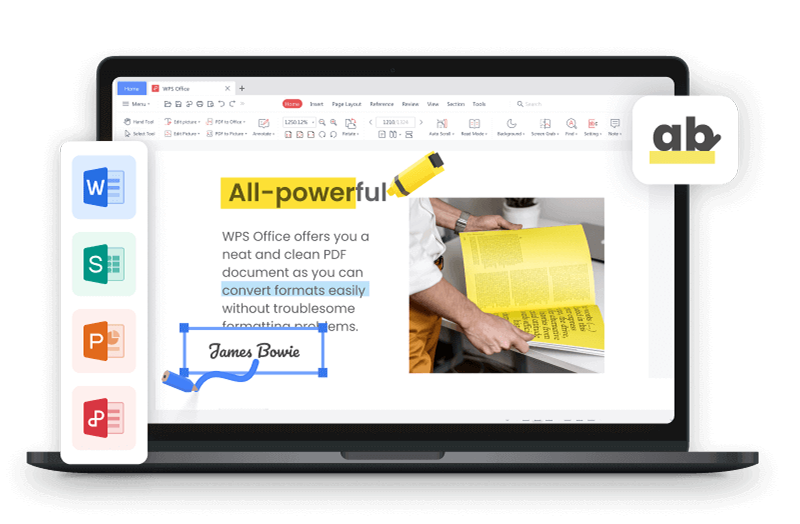
In today’s digital work environment, every second counts—especially when booting up your PC. Yet many users unknowingly allow unnecessary startup programs to drag down performance. Balancing system speed with functionality can feel risky and confusing. So how can we streamline Windows 10 without compromising essential tools? This guide lays out clear, safe methods to manage startup programs—from basic to advanced—plus AI-backed software swaps that improve performance.
Part 1: Windows 10 Startup Programs Basics – How to View & Disable
One of the most common causes of sluggish Windows 10 startup times is the excessive number of applications that launch automatically when the system boots up. These programs—often silently added during software installations—can pile up over time, consuming valuable memory, CPU, and disk resources before you even start working.
Fortunately, Windows 10 provides built-in tools that make it relatively easy to view, evaluate, and disable startup programs—no third-party software required.
Step 1: Open Task Manager
To begin managing your startup programs, you first need to open Task Manager:
Keyboard shortcut: Press Ctrl + Shift + Esc to launch Task Manager instantly.

Alternative: Right-click anywhere on the taskbar at the bottom of your screen, then select "Task Manager" from the menu that appears.

First time opening it? You may need to click “More details” at the bottom to expand into full view.
Step 2: Navigate to the “Startup” Tab
Once the Task Manager is in full view, locate and click the “Startup” tab (usually the fourth tab at the top). This section displays:
The name of each startup app.
Its publisher (e.g., Microsoft Corporation, Adobe, etc.).
The status (Enabled or Disabled).
The Startup impact rating: High, Medium, Low, or Not measured.
This is your command center for managing what loads during system boot.
Step 3: Check Startup Impact
Next, examine the Startup Impact column to determine which programs are having the greatest effect on boot time:
High: These programs significantly delay startup and should be reviewed carefully.
Medium: Moderate impact; worth evaluating.
Low: Minimal effect, usually safe to leave as-is.
Not Measured: Windows hasn’t yet calculated impact; monitor overtime.
Example: Programs like Adobe Creative Cloud, Microsoft Teams, OneDrive, or Spotify are often marked High and can slow startup—especially if not used immediately after boot.
Step 4: Disable Non-Essential Programs
Now that you’ve reviewed the list, it’s time to trim the fat:
Right-click on any non-essential program you wish to disable.
Click “Disable” from the context menu.
This will prevent the app from launching automatically the next time you boot your PC—but it won’t uninstall it or block manual usage.
You can re-enable it at any time by repeating the steps and choosing “Enable.”
What’s Safe to Disable?
Typically, safe to disable:
Music apps (e.g., Spotify)
Cloud services you rarely use (e.g., Dropbox, Google Drive)
Chat apps (e.g., Skype, Discord)
Update services for drivers/software not frequently used
Keep enabled:
Antivirus or firewall software (e.g., Windows Defender, Norton)
Graphics drivers utilities (e.g., NVIDIA Control Panel)
Touchpad or keyboard drivers (for laptops)
Pro Tips for Better Results
Research unknown entries: If you’re unsure whether a program is critical, search its name online or visit ProcessLibrary.com.
Keep a record: Note what you disabled, especially if you're troubleshooting slow startup.
Restart to test: After disabling startup items, reboot your PC and evaluate performance.
Use "Open file location": Right-click an entry and select “Open file location” to investigate its source—useful for spotting malware or bloatware.
Part 2: Windows 10 Startup Programs Customization – Folders vs. Registry
While the Task Manager method covered in Part 1 is ideal for disabling or enabling existing startup programs, what if you want to add your own apps to launch at startup—or remove hidden ones that don’t show in Task Manager? For more precise control, Windows 10 offers two powerful yet distinct methods: the Startup Folder and the Windows Registry.
Each method caters to different user levels and use cases and knowing when to use which can help you create a startup experience that matches your workflow perfectly.
Method 1: Using the Startup Folder (Beginner-Friendly)
The Startup Folder is a hidden system folder that contains shortcuts to programs that run automatically when a specific user logs in. This method is safe, user-specific, and doesn’t require advanced skills.
Steps to Access and Modify the Startup Folder:
Open the Run dialog:
Press Win + R on your keyboard.

Open the Startup Folder:
Type shell:startup and press Enter.
This opens the folder:
C:\Users\

Add or Remove Shortcuts:
To add an app:
Right-click anywhere in the folder → New > Shortcut
Browse to the .exe file of the program (e.g., Outlook, Notion, Dropbox)
Follow the prompts to create the shortcut.
To remove an app:
Delete the shortcut from this folder.
Note: This only affects the current user and not all users on the machine.
Pros of the Startup Folder Method:
There is no risk of damaging system files or registry entries.
Easily reversible—just delete the shortcut.
Perfect for casual users who want to auto-launch tools like:
Email clients (e.g., Outlook)
Cloud drives (e.g., Google Drive)
Project management tools (e.g., Trello, Notion)
Chat apps (e.g., Slack, WhatsApp Desktop)
Method 2: Using the Registry Editor (For Advanced Users)
For users who need system-wide control or wish to manage startup entries that don’t appear in Task Manager or the Startup Folder, the Windows Registry offers a powerful solution.
This method is more technical and comes with risk—but allows you to handle deeply embedded startup behaviors.
Steps to Add Programs via the Registry:
1. Open the Run dialog:
2. Press Win + R

3. Launch the Registry Editor:
4. Type regedit and press Enter.

5. Click Yes if prompted by User Account Control (UAC).
6. Navigate to the following path:
HKEY_CURRENT_USER\Software\Microsoft\Windows\CurrentVersion\Run
1. This key controls startup programs for the current user.
2. For system-wide control, use:
HKEY_LOCAL_MACHINE\Software\Microsoft\Windows\CurrentVersion\Run
3. Add a new startup entry:
4. Right-click the right pane → New → String Value
5. Name it as desired (e.g., "WPS Office")
6. Double-click the new entry and paste the full path of the program’s .exe file (e.g., C:\Program Files\WPS Office\wps.exe)
Important Caution:
Back up the registry before making changes.
In the Registry Editor, go to File → Export → Save a copy of your registry settings.
Mistakes in the Registry can cause system instability or prevent Windows from starting properly.
Pros of the Registry Method:
Greater power and flexibility—ideal for developers and IT admins.
Can enable or disable hidden startup apps that don’t appear elsewhere.
Applies to all users if set under HKEY_LOCAL_MACHINE.
Startup Folder vs. Registry Editor: Head-to-Head Comparison
Method |
Ease of Use |
Control Level |
Risk Level |
|---|---|---|---|
Startup Folder |
★★★★☆ |
★★☆☆☆ |
Low |
Registry Editor |
★★☆☆☆ |
★★★★★ |
High |
Use Case Scenarios
Scenario |
Best Method |
|---|---|
Add your email app to start with Windows |
Startup Folder |
Remove a hidden app that doesn't show in Task Manager |
Registry Editor |
Deploy startup settings across multiple users |
Registry (HKLM) |
Customize startup for a child or team member |
Startup Folder |
Part 3: Optimizing Windows 10 Startup Programs – AI Tools & Lightweight Alternatives - WPS Office

Once you’ve cleaned up and customized your startup list using Task Manager, the Startup Folder, or the Registry, the next step toward a faster Windows 10 experience is choosing smarter, lighter software that doesn’t weigh down your system.
One common culprit of slow boot times is heavy office productivity suites like Microsoft 365. These applications often run background services, auto-launch add-ins, or schedule update checks that consume system resources—even if you’re not actively using them right away.
That’s where WPS Office stands out as a game-changing alternative.
Use AI-Integrated Apps like WPS Office
WPS Office, developed by Kingsoft, is a compact, AI-enhanced productivity suite that replicates core features of Microsoft Office without the bloated size, cost, or startup interference.
Faster Boot:
WPS Office doesn’t auto-load unnecessary background processes when you start your PC, meaning it preserves RAM, CPU, and disk I/O for what you actually need at login.
AI-Powered Tools:
Includes smart features like:
1-click PDF to Word conversion
Automatic document summarization
AI-assisted formatting and grammar checking
No Admin Rights Required:
Ideal for users in restricted environments (like shared family PCs, classrooms, or low-permission corporate accounts) where installing or updating Microsoft 365 can be frustrating.
Bonus: It’s also fully compatible with DOCX, XLSX, PPTX—ensuring smooth file exchange with Microsoft Office users.
Cost Comparison: WPS Office vs. Microsoft 365
Feature |
WPS Office |
Microsoft 365 |
|---|---|---|
Price |
Free or ~$30/year |
$99/year (Microsoft 365 Personal) |
AI Tools |
PDF, Word assist, summaries |
Partial (limited AI Copilot access) |
Startup Load |
Minimal |
High (OneDrive, OfficeHub, Updaters) |
File Compatibility |
Full DOCX/XLSX/PPTX support |
Full DOCX/XLSX/PPTX support |
Why Does This Matters for Startup Optimization?
When your system boots, every running process—whether visible or hidden—adds milliseconds to load time. By replacing resource-intensive software with lightweight AI-powered tools, you’re not just saving startup time—you’re freeing up system capacity for faster multitasking and responsiveness throughout the day.
So, if you’re frustrated with slow boot-ups caused by office tools and update agents, WPS Office offers a clean, efficient, and intelligent alternative that won’t compromise on functionality.
FAQs
Q1: Is it safe to disable all startup programs?
No. Apps like antivirus software, drivers, and security tools should be retained. Disable only non-essential apps and always test after changes.
Q2: Why do some apps re-enable themselves?
Some apps modify registry entries or folder shortcuts after updates. Use tools like Autoruns by Microsoft to remove persistent entries.
Q3: How to spot malware in startup programs?
Look for unknown publishers, unusual file paths, and random names. Use antivirus software and tools like Malwarebytes for detection.
Summary
Managing Windows 10 startup programs isn’t just about speed—it’s about control and efficiency.
By using tools like Task Manager and the startup folder, even casual users can reclaim precious seconds during boot. Power users can take things further with Registry Editor or Autoruns for fine-tuned control.
A smarter strategy? Replace bloated apps with lean, AI-powered tools like WPS Office, which run faster, cost less, and don’t burden your system at startup. In a world where productivity is everything, smart software choices make all the difference.




